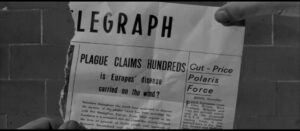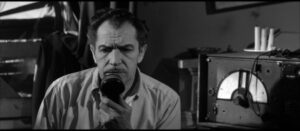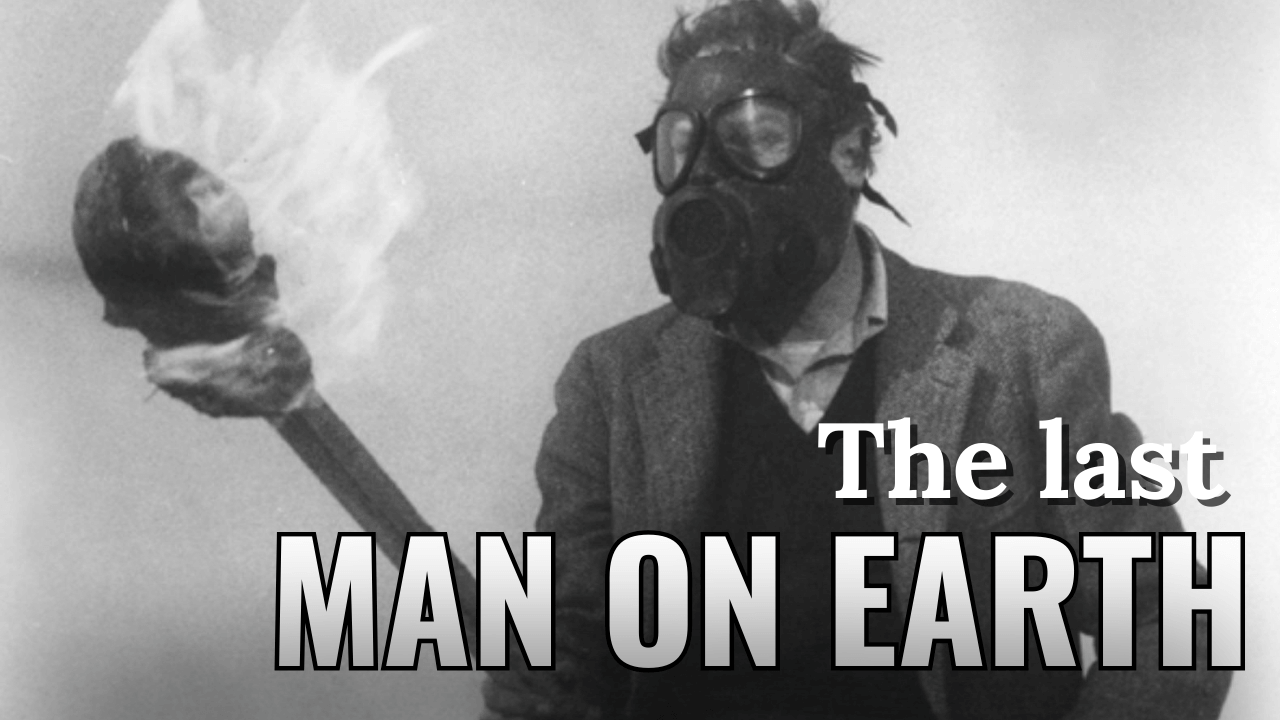A Haunting Post-Apocalyptic Masterpiece

Imagine waking up to a world where everyone you know is gone, replaced by night-stalking, bloodthirsty creatures. This is the bleak reality of “The Last Man on Earth” (1964).
Adapted from Richard Matheson’s novel I Am Legend, this film takes audiences on a chilling journey into isolation, survival, and despair.
Unlike modern zombie thrillers filled with action and explosions, this film builds its horror through eerie silence, psychological torment, and an overwhelming sense of loneliness.
Starring the legendary Vincent Price, this black-and-white classic remains one of the most influential post-apocalyptic horror films of its time.
Cast & Main Characters
Vincent Price as Dr. Robert Morgan Vincent Price, the undisputed king of horror, brings gravitas and depth to the role of Dr. Robert Morgan. Born in 1911, Price was a renowned actor known for his distinctive voice and commanding screen presence. His career spanned decades, with iconic roles in films like House of Wax (1953), The Fly (1958), and The Tingler (1959). In The Last Man on Earth, Price delivers a deeply emotional performance, portraying a man battling not just monsters, but his own crushing loneliness.
Franca Bettoia as Ruth Collins Franca Bettoia, an Italian actress known for her work in 1960s cinema, plays Ruth Collins. Ruth appears to be a fellow survivor, but as the story unfolds, her true nature is revealed. Bettoia’s performance adds intrigue and emotional conflict to the film, serving as a pivotal character in Morgan’s tragic journey. Her subtle and nuanced portrayal elevates the tension and mystery, making her a memorable part of this haunting narrative.
Plot Summary

Dr. Robert Morgan is the last known human survivor of a devastating plague. By day, he scours the deserted city, gathering supplies and staking the bodies of infected creatures to prevent them from rising again. By night, he barricades himself inside his fortified home, enduring the terrifying howls and relentless assaults of the nocturnal beings that were once his friends, neighbors, and family.
Flashbacks reveal his painful past—how he lost his wife and daughter to the mysterious virus and how he watched helplessly as society collapsed. While Morgan has managed to survive, he is emotionally broken, haunted by memories of his former life.
One day, he encounters Ruth, a woman who appears to be uninfected. However, he soon discovers that she is part of a new, evolved society of infected individuals who have learned to control the disease. Unlike the mindless monsters Morgan has been hunting, Ruth and her people see him as a relic of the past—a danger to their future. This revelation leads to a heartbreaking climax that challenges the viewer’s perception of who the real monster is.
Themes & Analysis
Isolation and Psychological Horror
More than just a horror film, The Last Man on Earth explores the devastating effects of isolation. Vincent Price’s portrayal of Morgan’s loneliness is palpable, making the audience feel the weight of his solitary existence. The empty streets, the echoing silence, and the lifeless city create an overwhelming sense of abandonment.
The Fragility of Civilization
The film reflects Cold War-era anxieties about global pandemics and societal collapse. The idea that a virus could wipe out humanity and transform people into monsters is more terrifying than any supernatural threat. This concept remains eerily relevant today, making the film a thought-provoking watch even decades later.
The Monster Within
One of the film’s most profound messages is the shifting perspective of who the true monster is. To Morgan, the infected are mindless creatures to be exterminated. But as the story unfolds, it becomes clear that he is the last remnant of a bygone world, clinging to outdated beliefs. This moral ambiguity adds depth to the narrative, forcing viewers to question their own assumptions.
Cinematic Style & Atmosphere
The film’s stark black-and-white cinematography enhances its bleak atmosphere. The deserted cityscapes, the dimly lit interiors, and the slow, methodical pacing create an eerie sense of dread. The practical effects, though simple, effectively depict the monstrous transformation of the infected.
Director Ubaldo Ragona and Sidney Salkow use long, quiet scenes to emphasize isolation, making the moments of horror even more jarring. The use of shadows and dim lighting evokes classic gothic horror, a fitting style for a film starring Vincent Price.
Influence & Legacy
Despite its modest production values, The Last Man on Earth has had a lasting impact on the horror and sci-fi genres. It was the first adaptation of I Am Legend, paving the way for later films like The Omega Man (1971) and I Am Legend (2007), starring Will Smith.
The film also influenced the modern zombie genre. George A. Romero cited it as an inspiration for Night of the Living Dead (1968), which would go on to define zombie horror as we know it today.
Final Thoughts
The Last Man on Earth (1964) is a must-watch for fans of classic horror, post-apocalyptic stories, and psychological thrillers. Its eerie atmosphere, thought-provoking themes, and Vincent Price’s unforgettable performance make it a standout film in cinema history.
If you appreciate slow-burning, intelligent horror that lingers in your mind long after the credits roll, this is a film you shouldn’t miss. So, turn off the lights, settle in, and prepare to experience the haunting loneliness of The Last Man on Earth.
What are your thoughts on this classic horror film? Let us know in the comments!



